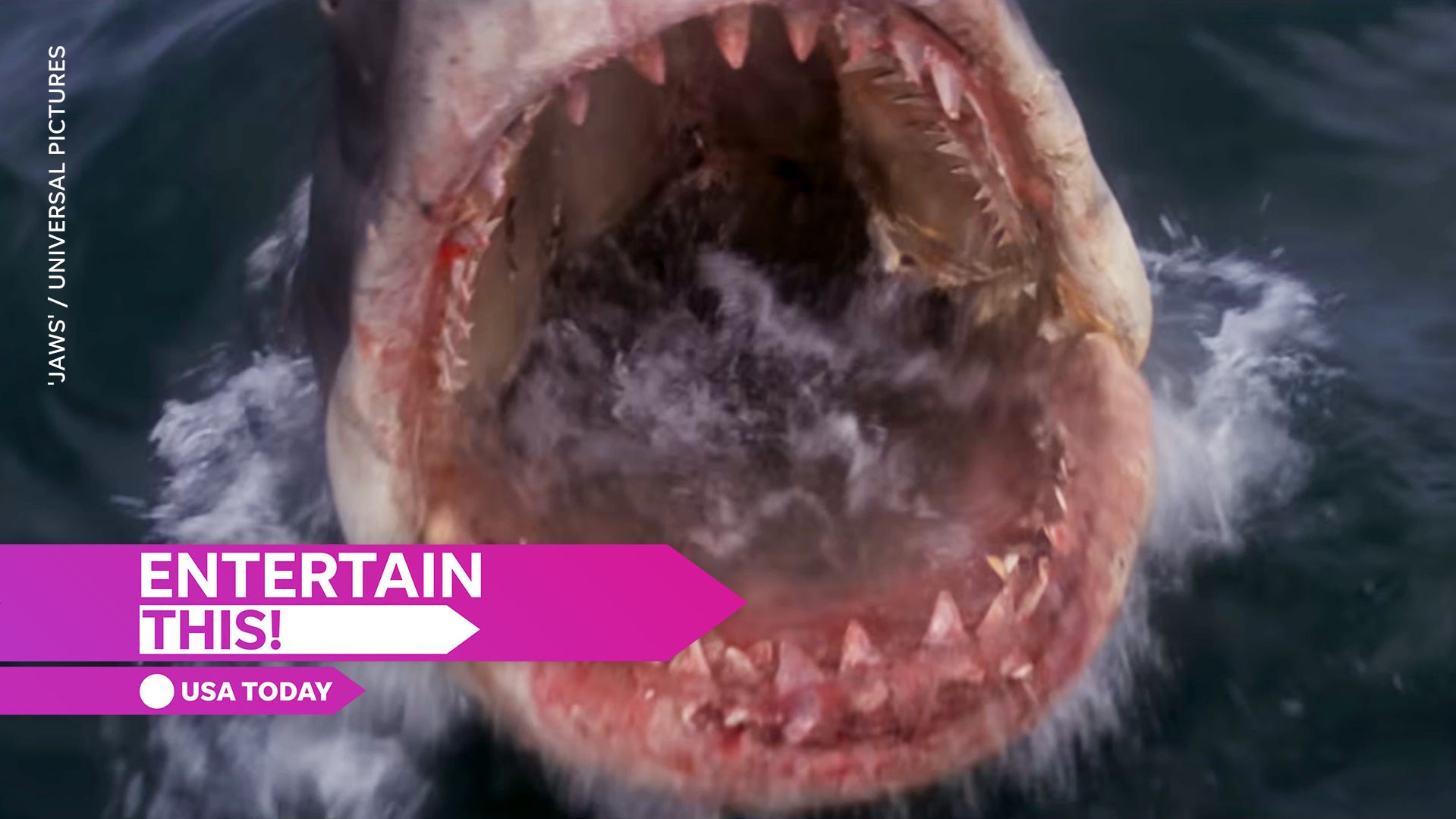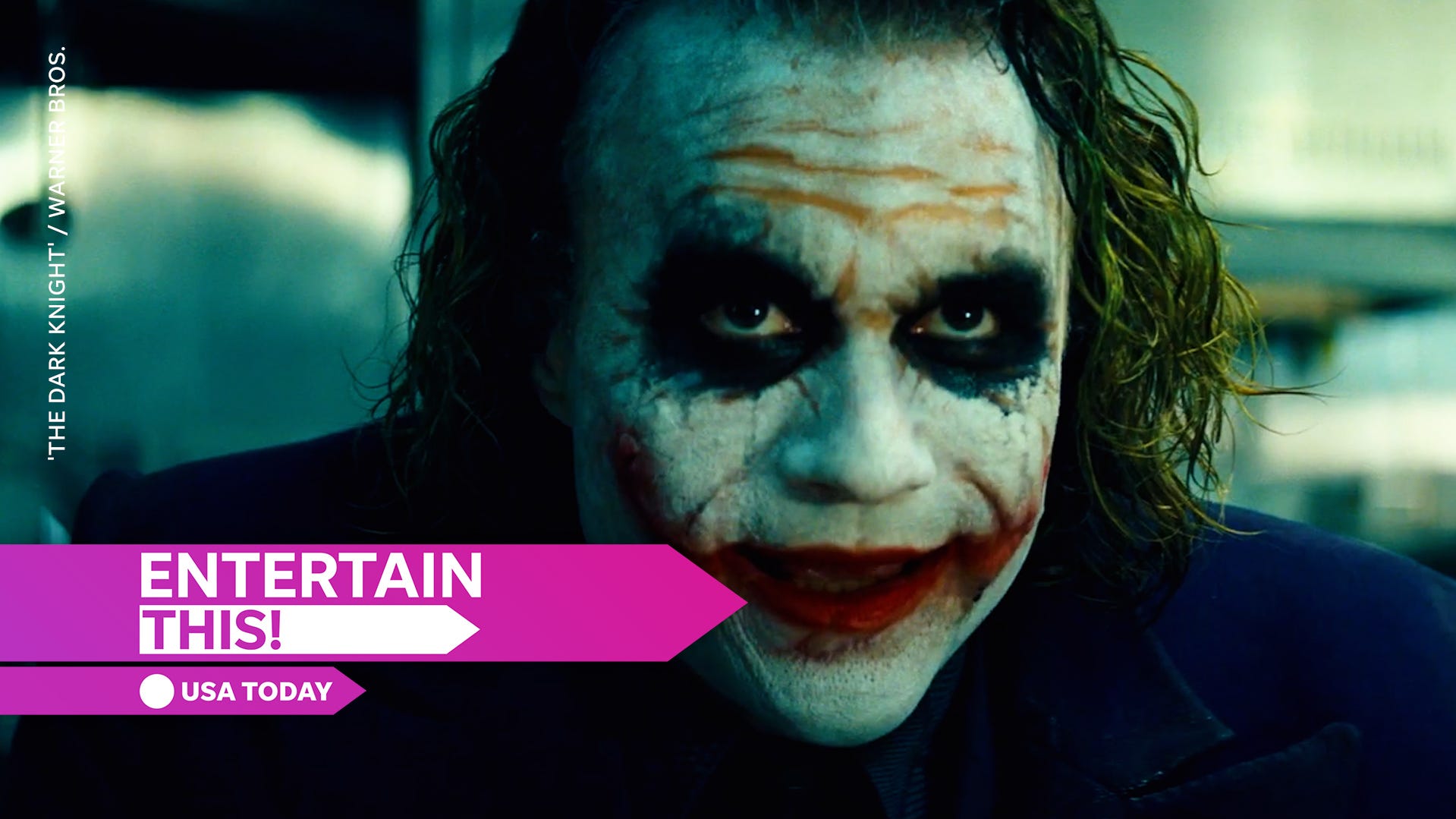50 fun facts about 'Jaws' as the movie celebrates the big 5-0

Oh, the shark has pretty teeth, dear. And he showed them, pearly white, exactly 50 years ago this June − when the movie "Jaws" made its sensational splash.
Remember the screams in the theater as Chrissie (Susan Backlinie) was dragged under the water in that harrowing first sequence? Remember the banter of those three men in a boat (Roy Scheider, Robert Shaw and Richard Dreyfuss) as they track down the monster responsible for destroying tourist season on the fictional Amity Island?
"Jaws," released June 20, 1975, is often cited as the film that launched modern Hollywood: the summer blockbuster that established Steven Spielberg as one of the twin peaks of the new Hollywood (George Lucas' "Star Wars" would come out two years later).
But "Jaws" could just as easily be called the last hurrah of the old Hollywood. It was one of the last big films of the pre-CGI era: The special effects had to be welded, hammered and bolted together. And that led directly to the happiest accident of the film. The mechanical shark, nicknamed "Bruce," turned out to be such an unwieldy, unconvincing Edsel of a contraption that Spielberg was obliged to keep it offscreen for most of "Jaws."
That, as it turned out, was the making of the movie. The audience's imagination provided a far more fearsome shark than Spielberg could have.
"Jaws" has also gotten the blame for making America shark-crazy − as phenomena like Discovery Channel's "Shark Week" and the "Sharknado" TV movies attest. The late "Jaws" author Peter Benchley came to regret his share in the vilification of the great white shark, an animal now on the endangered species list.
"Twenty-five years ago, nobody knew anything about great white sharks," Benchley told The (Bergen, N.J.) Record in 1999. "The concept of a rogue shark that has a taste for human flesh −people believed it."
50 interesting facts about 'Jaws' for the shark movie's 50th anniversary

Here's a mouthful of "Jaws" facts − 50 in all − for the film's 50th anniversary:
- The mechanical shark Bruce was named after Steven Spielberg's lawyer, Bruce Raimer.
- "Jaws" was nominated for four Oscars and won three: best sound, best score, best editing.
- Susan Backlinie, who played the shark's first victim, was harnessed to two ropes that dragged her back and forth in the water to simulate the attack.
- There are six shark victims in the movie (including − implied − a dog).
- Spielberg was only 28 when "Jaws" was released.
- Writer Peter Benchley plays a TV reporter in one movie scene.
- Benchley (originally hired to write the screenplay) and Spielberg publicly sniped at each other in the months leading up to the release.
- "Jaws" was filmed mostly on Martha's Vineyard in Massachusetts.
- In the original novel, the Mafia puts pressure on the mayor to keep the beaches open.
- Composer John Williams, whose career got a huge boost from this movie, was known as "Johnny Williams" back when he wrote scores for TV shows like "Lost in Space."
- Carl Gottlieb, the primary author of the screenplay, plays the newspaper editor Meadows.
- "Jaws" opened simultaneously on more than 450 screens in North America.
- Murray Hamilton, who played the sleazy mayor of Amity, was chosen partly for his resemblance to Richard Nixon.
- In 2001, "Jaws" was declared "culturally, historically or aesthetically significant" by the National Film Registry of the Library of Congress.
- There were three "Jaws" sequels.
- Quint's monologue about the U.S.S. Indianapolis − supposedly an uncredited contribution by screenwriter John Milius − was based on a real incident.
- The film was originally scheduled for a 55-day shoot. It took 159 days.
- Charlton Heston lobbied hard for the Brody role.
- "Jaws" was based on an actual 1916 incident at the Jersey Shore: A rogue shark killed four bathers, two of them in an estuary (there is a similar scene in the movie).
- In the original novel, Hooper (Richard Dreyfuss) and Mrs. Brody (Lorraine Gary) have an affair.
- Scott Joplin's ragtime is heard from the band shell during the "beach panic" sequence. "The Sting," the 1973 hit movie that sparked the ragtime revival, co-starred Robert Shaw of "Jaws."
- The "shock" moment when Ben Gardner's disfigured head pops out of the boat was an eleventh-hour addition: After test screenings, Spielberg decided the movie needed one more big scream.
- Besides "Moby-Dick," "Jaws" may owe something to Henrik Ibsen's play "An Enemy of the People," in which a doctor tries to warn townspeople that their resort is contaminated.
- At one point, a disgruntled Hooper drawls, "I'm not going to stand this abuse much longer" − a parody of Clark Gable in "Mutiny on the Bounty."
- Universal Studios spent $1.8 million promoting "Jaws."
- "Jaws" was first shown on TV in 1979.
- "You're gonna need a bigger boat," the film's most famous catchphrase, was an improvised line.
- Reduced beachgoing and increased shark-sightings in 1975 were both attributed to "Jaws."
- In the original novel, Hooper dies.
- Benchley followed up the monster shark with a monster eel ("The Deep," 1976) and a monster squid ("Beast," 1991).
- Quint's boat is the Orca. A "Jaws" movie ripoff called "Orca," about a killer whale, came out in 1977.
- "Jaws" lost the best picture Oscar to "One Flew Over the Cuckoo's Nest."
- Movie rights for "Jaws" were purchased for about $175,000.
- Lorraine Gary (who played Ellen Brody) was the wife of Sid Sheinberg, the then-president of MCA/Universal, which distributed the film.
- Shaw based his Quint characterization on Craig Kingsbury, a Martha's Vineyard fisherman, who played Ben Gardner in the film.
- The striking shot of Brody's (Scheider) reaction to the beach attack was achieved by simultaneously zooming in and trucking out, a technique Spielberg borrowed from Hitchcock's "Vertigo."
- Dick Richards, an earlier director considered for the project, was dropped by irritated producers Richard D. Zanuck and David Brown when he kept referring to the shark as "the whale" in story conferences.
- The film had a legendarily difficult shoot, with many delays and problems; the crew took to calling it "Flaws." Until it opened, many thought "Jaws" would be a colossal flop.
- Spielberg skipped the final day of shooting and was afraid disgruntled crewmen would throw him in the water. He later made it a tradition to be absent from his sets on the last day of the shoot.
- "Jaws" cost $12 million to make and ultimately grossed $267 million domestically.
- A 2008 documentary about the making of "Jaws" was called "The Shark Is Still Working." A 2019 play about the making of "Jaws," written by Ian Shaw (Robert Shaw's son) and Joseph Nixon, is called "The Shark Is Broken."
- "Jaws" has been rightly accused of creating shark phobia. It has also been rightly credited with creating more awareness of and concern for sharks.
- Dreyfuss is the only one of the three principal actors still alive.
- Amity Island, the fictional locale of Peter Benchley's book, appears to be modeled on Long Island. Most viewers of the film, which was shot on Martha's Vineyard, assume it's somewhere in New England.
- Peter Benchley had never set foot on Martha's Vineyard before filming began.
- Iin the originally screenplay, Hooper was supposed to die in the shark cage, as he had in Benchley's book. However, footage of a live shark mauling the empty cage was so exciting that Spielberg wanted to incorporate it in the film. In order to explain the empty cage, they devised the twist where Hooper escapes and hides on the ocean floor.
- A scene of Quint laughing at the 1956 movie version of "Moby Dick" was nixed when Gregory Peck, who played Ahab in that film, refused to grant permission.
- Jeff Bridges, Jon Voight and Timothy Bottoms were all considered for the role of Hooper.
- "Show Me the Way to Go Home," the 1925 English music hall song that Brody, Hooper and Quint sing in drunken fellowship, has also been quoted in dozens of books (including Norman Mailer's "Naked and the Dead" and Truman Capote's "A Christmas Memory") and films ("A River Runs Through It"). In 1932, it was the centerpiece of a Max Fleischer "bouncing ball" cartoon.
- Benchley thought the film's ending, where the shark was blown up by firing shots into a scuba tank, would strike audiences as ridiculous. Spielberg argued that the audience has suspended so much disbelief by that point that they would accept that as well. He was right.